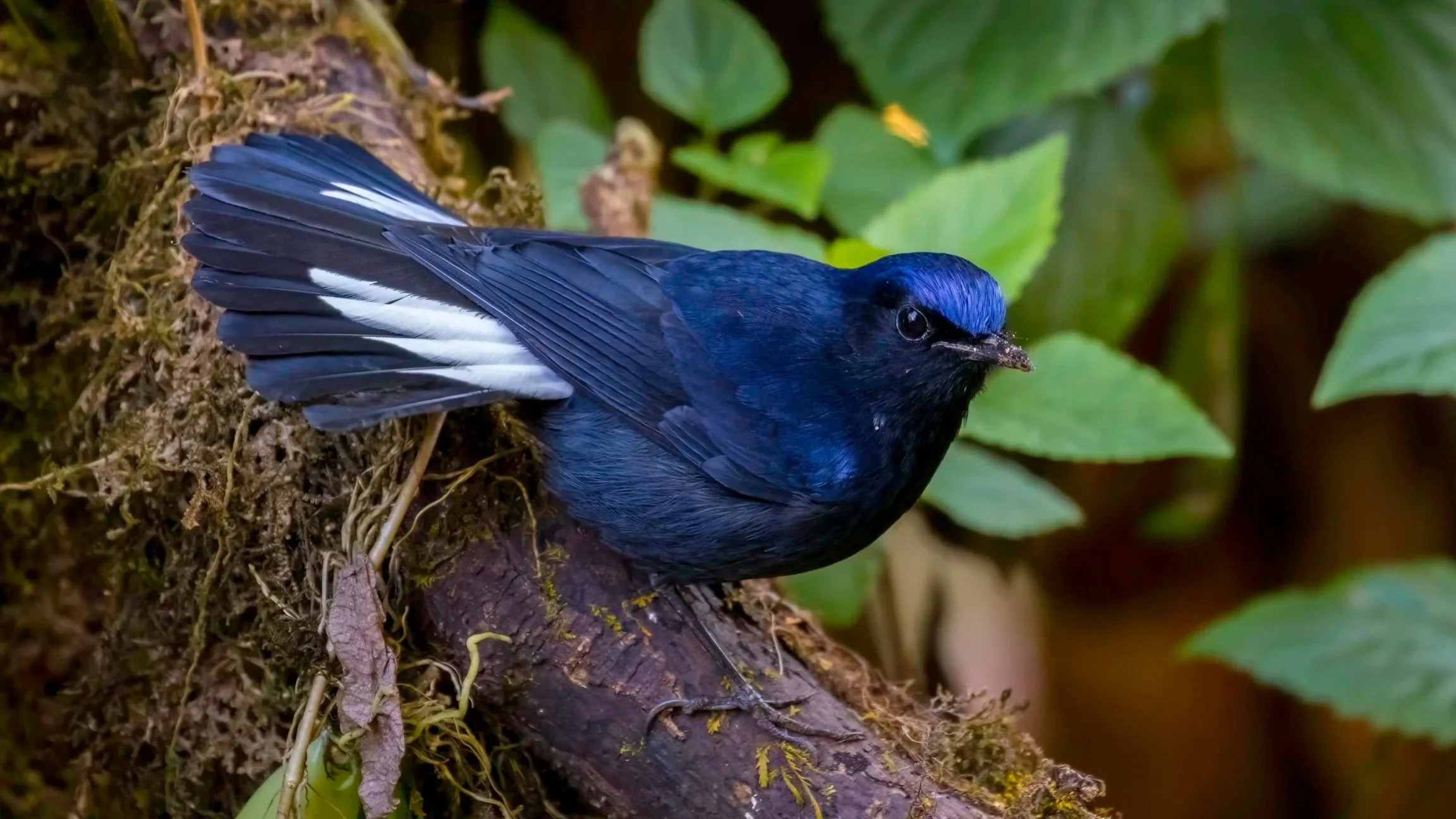Siberian Rubythroat
Calliope calliope
Doi Pha Hom Pok National Park, Chiang Mai, Thailand
The Siberian rubythroat (Calliope calliope) is a small passerine bird that was formerly classed as a member of the thrush family, Turdidae, but is now more generally considered to be an Old World Flycatcher of the family Muscicapidae. The Siberian rubythroat and similar small European species are often called chats. More on chats in a later blog. A perky, long-legged songbird that winters in areas with dense understory coverage, often near wet areas; it breeds in open taiga and highland forest clearings.
The Old World Flycatchers are a large family, the Muscicapidae, of small passerine birds mostly restricted to the Old World (Europe, Africa and Asia). These are mainly small arboreal insectivores, many of which, as the name implies, take their prey on the wing. The family includes 324 species and is divided into 51 genera. Muscicapa comes from the Latin musca meaning a fly and capere to catch. The appearance of these birds is very varied, but they mostly have weak songs and harsh calls. They are small to medium birds, ranging from 9 to 22 cm in length. Many species are dull brown in colour, but the plumage of some can be much brighter, especially in the males. Most have broad, flattened bills suited to catching insects in flight, although the few ground-foraging species typically have finer bills.
I have already talked about, in earlier blogs, some of the many families of the Muscicapidae , the genus Phoenicurus – Redstarts, the genus Myophonus - Whistling Thrushes, the genus Ficedula & Cyornis in the Old World Flycatchers and the Niltavas from the subfamily Niltavinae last week.
The rubythroat is a migratory insectivorous species breeding in mixed coniferous forests with undergrowth in Siberia. It nests near the ground. It winters in Thailand, India, Indonesia and Bangladesh. It is an extremely rare vagrant to Western Europe, having occurred on a very few occasions as far west as Britain. It is also an extremely rare vagrant to the Aleutian Islands, most notably on Attu Island. It is an active and elusive bird, often hiding in dense cover.
This species is slightly larger than the European robin. It is plain brown above except for the distinctive black tail with red side patches. It has a strong white supercilium. The male has a red throat edged with a narrow black and then a broad white border. It has a strong white supercilium. Females lack the brightly coloured throat and borders. The male has a song similar to a harder version of the garden warbler.
Pale brown above, whitish below, with olive-brown flanks and pale supercilium. Adult male has the namesake jewel-like red throat, bordered in black and white; younger male may have a hint of red, while female lacks red. Often droops wings and cocks tail upright as seen in the photo above.
The Siberian rubythroat was previously placed in the genus Luscinia. A large molecular phylogenetic study published in 2010 found that Luscinia was not monophyletic. The genus was therefore split and several species including the Siberian rubythroat as the type species were moved to the reinstated genus Calliope.
Calliope, from classical Greek meaning beautiful-voiced, was one of the muses in Greek mythology and presided over eloquence and heroic poetry.
The rubythroat has a variable melodic song consisting of beautiful warbling and occasional mimicry; calls include low, hoarse “chuk” and high “chelee.” The male Siberian Rubythroat is very vocal and the song is rich, strong, complex and varied. In addition some mimicry is possible. The bird can sing on a post and repeat a variety of songs 10-15 times a minute. A composite recording of songs can be heard here.
The other day I was having a conversation with someone on the use of bird song to call birds by “bird watchers“ and “bird photographers“. There are so many ways a bird calls - how will one choose a song to use to call the bird? Then there are the ethics of said use and also the impact on the birds and how it can potentially change their behaviour based on the extent of use. I have here a couple of recordings from Xeno-Canto to illustrate but these are just a couple. Birds can call in multiple ways and then there are those that can mimic.
For more videos: Video Shorts
Related Posts






